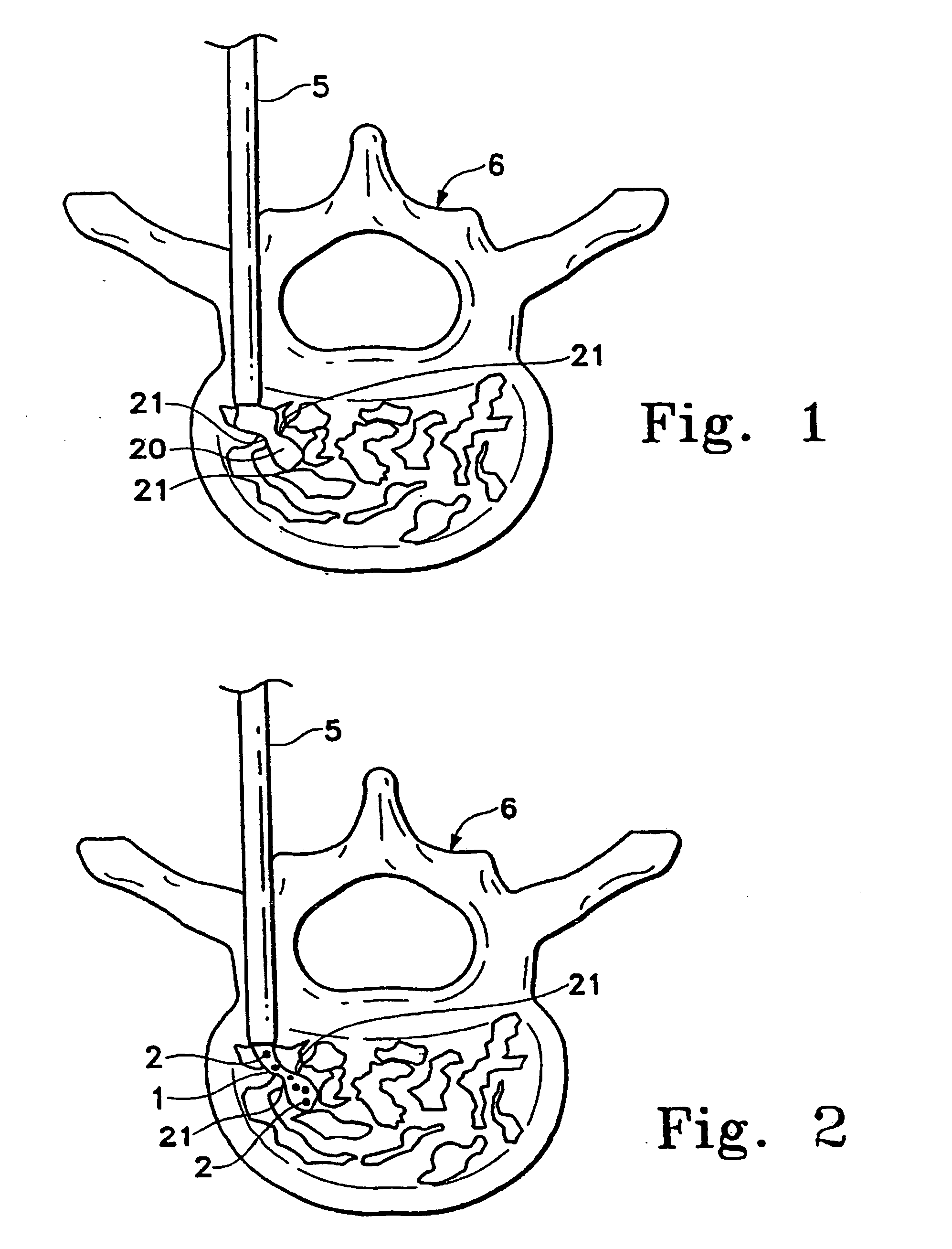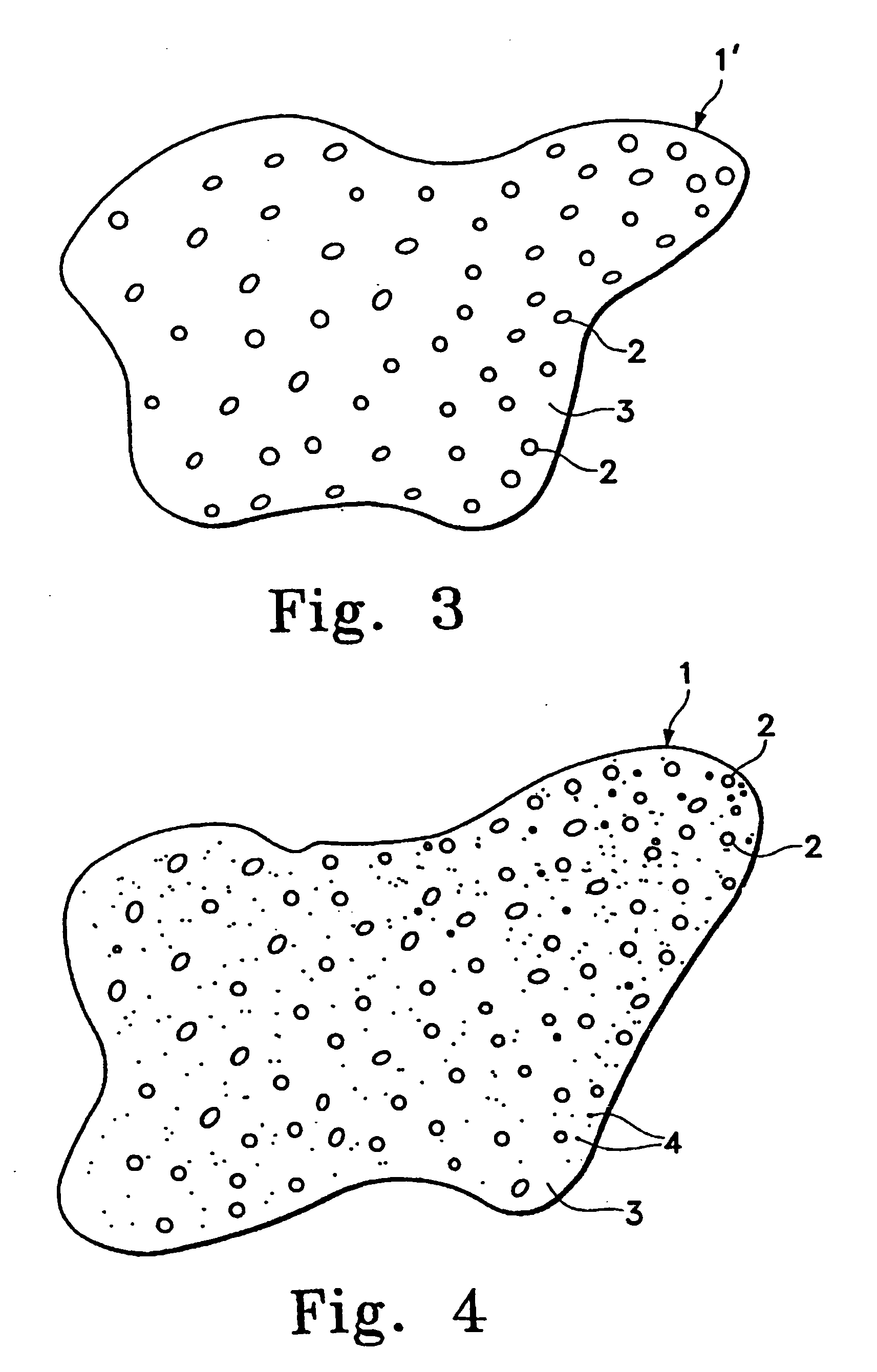Enhanced visibility materials for implantation in hard tissue
- Summary
- Abstract
- Description
- Claims
- Application Information
AI Technical Summary
Benefits of technology
Problems solved by technology
Method used
Image
Examples
example 1
[0037] A slurry of PMMA is prepared from about 10 g of a powder phase which is 15% w / w polymethynethacrylate, 74% w / w methacrylate-styrene copolymer, 10% w / w commercially available barium sulfate powder (e.g., E-Z-EM, Westbury, N.Y.), and 1% w / w tracer particles made of barium sulfate particles having a particle size within the range of between about 570 and 1150μ. To the powder phase is added about 6-9 cc of a liquid phase made up of about 97.4% v / v methacrylate monomer, about 2.6% v / v N,N dimethyl-p-toluidene; and 75.−+0.15 ppm hydroquinone. The slurry is thoroughly mixed until a cake glaze like consistency is reached, at which time the composition is ready for implantation.
example 2
[0038] A 10 cc volume slurry of PMMA is prepared from a powder phase which is 15% w / w polymethylmethacrylate, 75% w / w methacrylate-styrene copolymer, and 10% w / w tracer particles made of a mixture of barium sulfate particles and tungsten particles, each having a particle size within the range of between about 570 and 1150μ.
PUM
 Login to View More
Login to View More Abstract
Description
Claims
Application Information
 Login to View More
Login to View More - R&D
- Intellectual Property
- Life Sciences
- Materials
- Tech Scout
- Unparalleled Data Quality
- Higher Quality Content
- 60% Fewer Hallucinations
Browse by: Latest US Patents, China's latest patents, Technical Efficacy Thesaurus, Application Domain, Technology Topic, Popular Technical Reports.
© 2025 PatSnap. All rights reserved.Legal|Privacy policy|Modern Slavery Act Transparency Statement|Sitemap|About US| Contact US: help@patsnap.com



